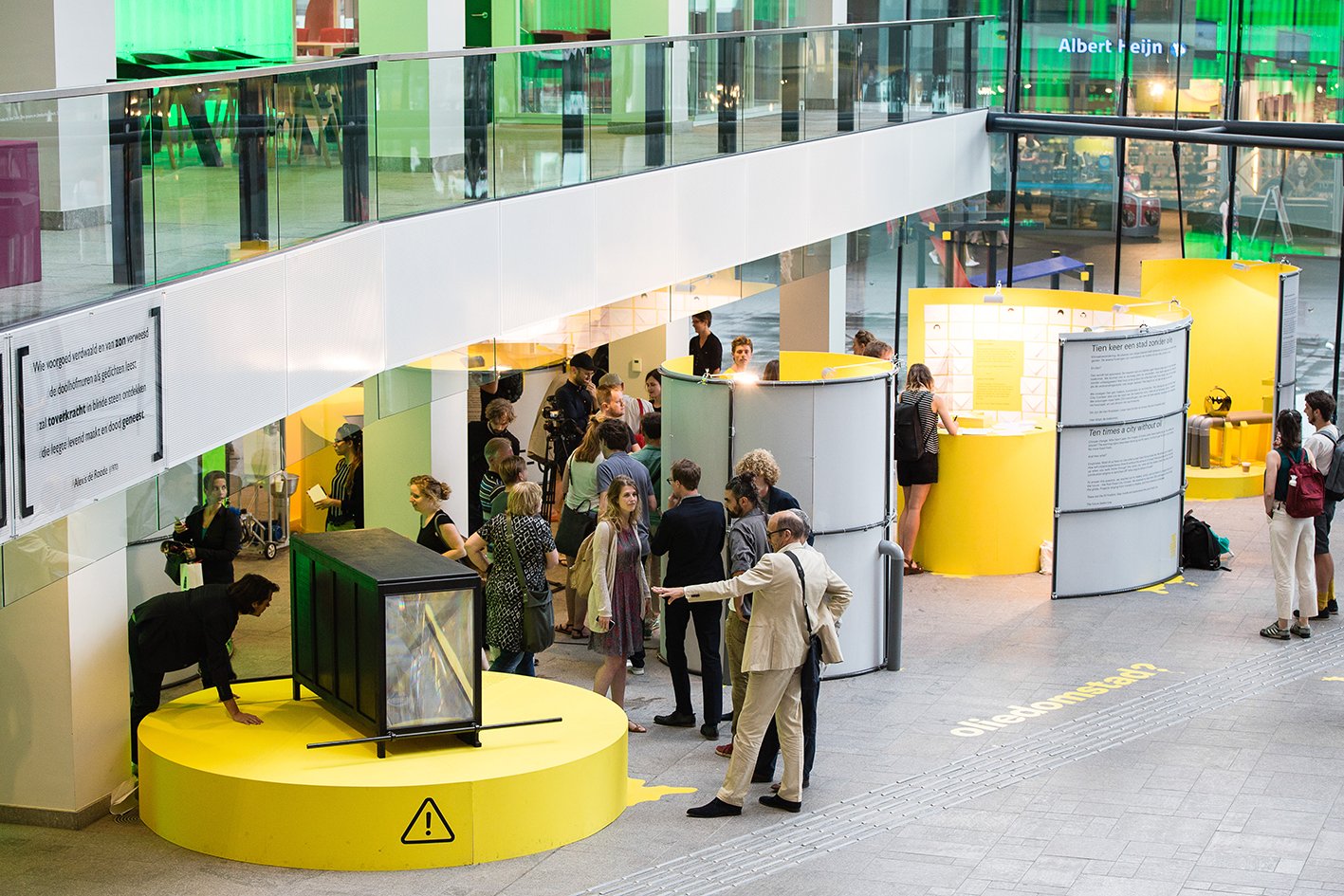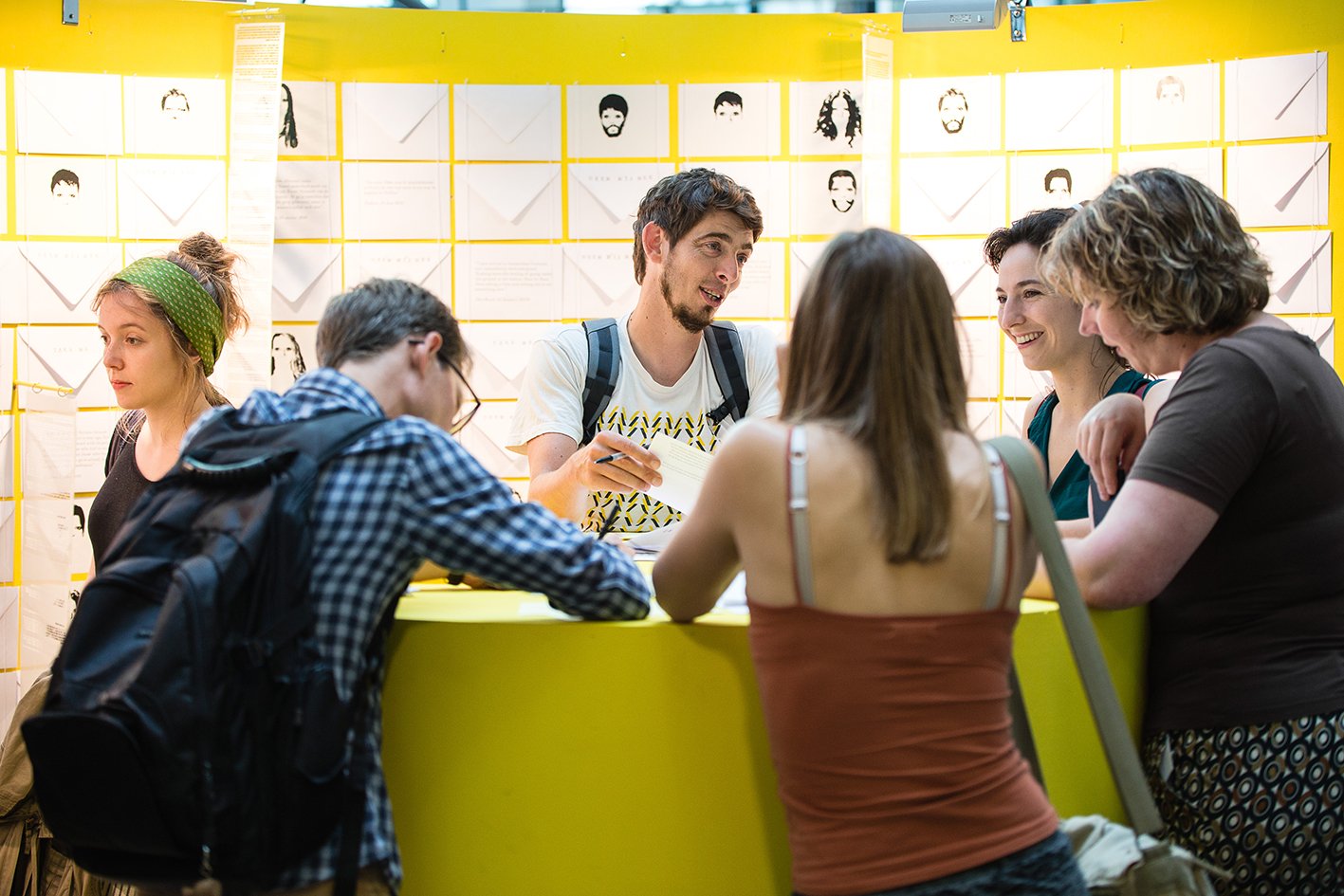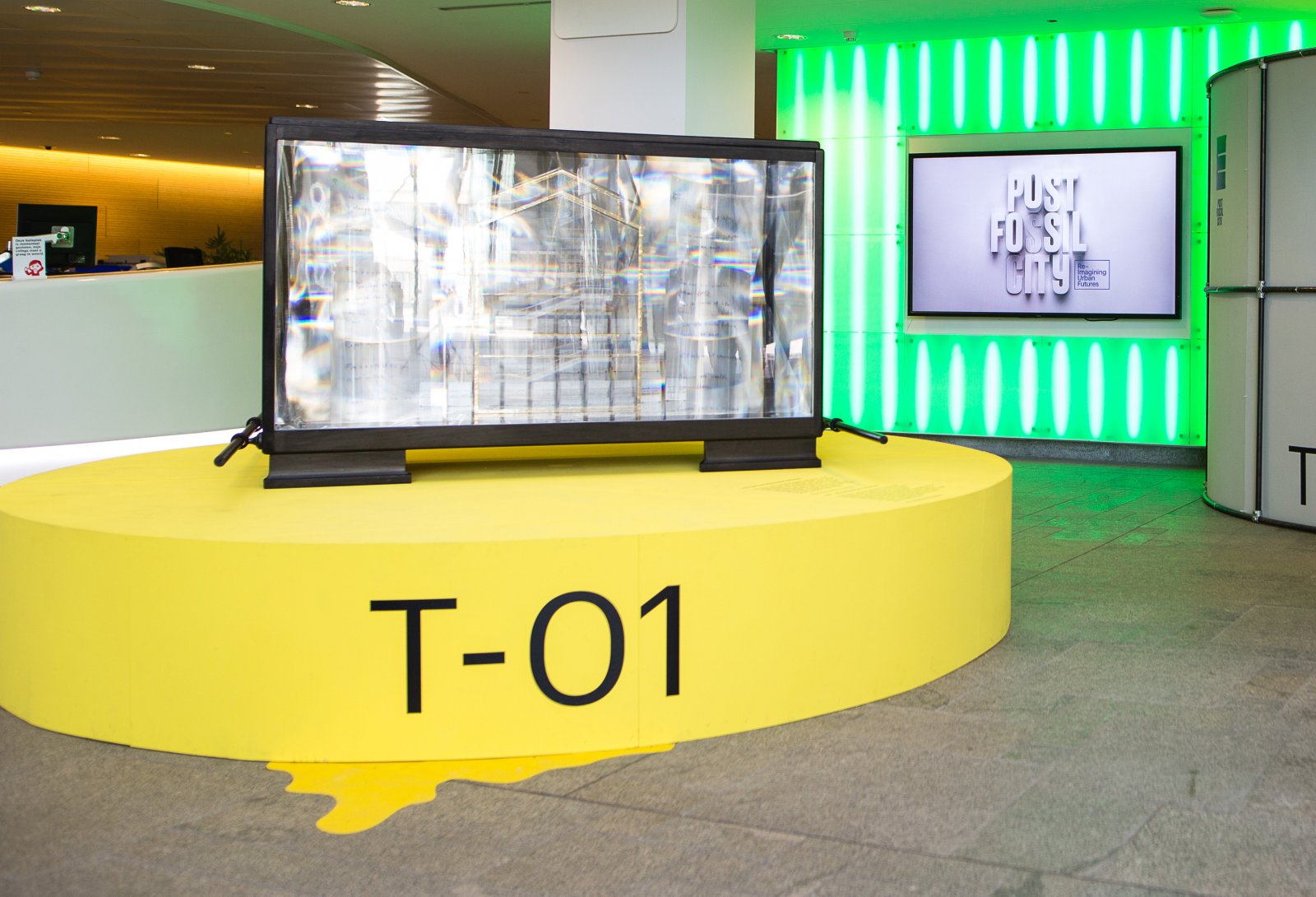The Post-Fossil City:
Re-Imagining Urban Futures
The Post-Fossil City Exhibition
The city of the future: oil, coal and gas excluded. In 2017 The Urban Futures Studio organised the Post-Fossil City Contest, calling on artists, designers, architects, urbanists, authors, photographers, film makers and all-around creative thinkers to imagine a city that is no longer reliant on fossil fuels. We received 250 submissions from people in over 40 countries, ranging from architects to physical scientists, from designers to musicians. A selection of the ten most interesting submissions were exhibited at the city hall's of Utrecht and The Hague.


Winner
At the Grand Opening ceremony on June 22, 2017, the winner of the Post-Fossil City Contest was announced: "The Ark of the Newest Covenant" by Jaap Godrie and Walter Breukers. The Ark houses the Symbolic City and 10 Sustainable Commandments and will travel from city to city for the next 40 years. In each city, it will serve as a tool for starting discussions and conversations about local sustainable futures. The ten commandments are not etched in stone and are also not always very clear or obvious; they will need to be interpreted by the citizens of each city time and time again. Read more about the Ark and the concept behind it in this news article in Trouw (Dutch).

Background
There is currently a lot of talk about climate change and the post-fossil era, but a lack of tangible images of what this future might actually look like. The Urban Futures Studio is convinced that engaging imaginaries of what the future might look like can facilitate the sustainability transition. What we need, as was the case with the introduction of the ‘car era’, are engaging imaginaries to entice people, to give some suggestion that this new future may be worth striving for. Currently much climate concepts are negative (as indeed ‘post-fossil’ is not entirely positive either). We think that new work on ‘Future Worlds’ suggests that there is quite some merit in at least assisting people to imagine the possibilities.
Imagining post-fossil futures is surprisingly difficult. That is why we turn to designers, artists and other creatives. By evoking these new representations, we want to inspire the public debate on urban futures we want. To make this happen, we hope the Post-Fossil City Contest will open a new space of possibility and ambition. We asked designers, artists and other creative minds to imagine the post-fossil city. There was no restriction in form; it could be a video, a novel, a scale model, a VR, a data visualisation, et cetera.
The competition was launched at www.postfossil.city. We asked for submissions from architects, writers, filmmakers, visual artists, theatre producers, poets, photographers and all other creatives who are able to visualize the post-fossil future in a distinct, creative way. A jury consisting of Anita van den Ende (Director Climate at the Ministry of Infrastructure and Environment), Winy Maas (architect, MVRDV), Willem Schinkel (professor of Sociology, Erasmus University Rotterdam), Lot van Hooijdonk (alderman, municipality of Utrecht), Michiel van Iersel (Non-fiction) and Maarten Hajer (Urban Futures Studio) then selected ten finalists who all received €1,000 to work on their ideas with the support of Urban Futures Studio. This resulted in a public exhibition in Utrecht of the ten nominated projects, and the announcement of the Winning Project, who received a €10,000 prize to develop the full project. The contest is organised by the Urban Futures Studio, in collaboration with the Ministry of Infrastructure and the Environment and the Municipality of Utrecht.
Check out the contest's long-read "Unchain the Imagination: A Call to Arts" for more information and inspiration.
Colophon
Initiative & Concept: Urban Futures Studio, Utrecht University
Curatorial team: René Boer (Non-fiction), Michiel van Iersel (Non-fiction), Peter Pelzer (Urban Futures Studio) & Wytske Versteeg (Urban Futures Studio)
Exhibition design: Celine de Waal Malefijt & Lion Zeegers (Studio KNOL)
Communication and website: Jeroen Beekmans & Joop de Boer (Golfstromen)
Design website and campaign: Stephan Achterberg, Ruben Doornweerd & Hugo Zwolsman (Van Lennep)
Coordination exhibition: Richard Pelgrim (Urban Futures Studio)
Project support: Vivian Toemen
Project lead: Peter Pelzer (Urban Futures Studio)

